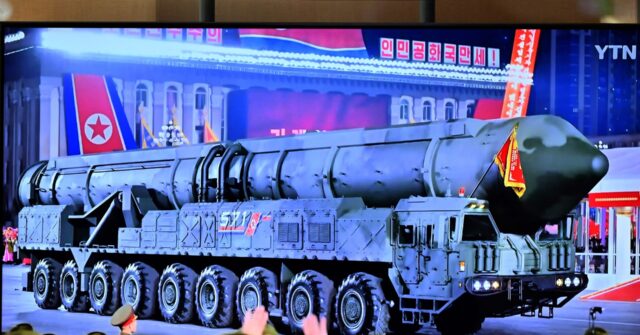In a shocking update from the South Korean Defense Intelligence Agency (DIA), lawmakers were informed that North Korea has been refurbishing the Punggye-ri Nuclear Test Site, which has remained inactive since 2017. The potential for a nuclear detonation timed to coincide with the upcoming U.S. presidential election has raised alarms among local and international observers. In a separate statement, a Japanese government spokesperson acknowledged similar concerns, citing “relevant data” that suggests the Kim regime may conduct a nuclear test soon. The backdrop to these developments highlights the ongoing tensions on the Korean Peninsula and reaffirms international fears regarding North Korea’s nuclear ambitions.
Historically, North Korea has conducted seven illegal nuclear tests, most of which occurred during former President Barack Obama’s administration. The last such test took place in 2017 and led to speculation that the Punggye-ri site had been rendered unusable. However, in a display of controlled public relations, North Korea orchestrated an event in 2018 that supposedly showcased the “dismantling” of the test site, albeit through a symbolic explosion designed to attract media attention. While the tensions subsided somewhat during Trump’s presidency, Kim Jong-un’s rhetoric has significantly escalated under President Joe Biden, reflecting a more aggressive stance from Pyongyang and an apparent preparation for potential conflict with the U.S. and South Korea.
Reports from South Korean officials after a DIA briefing revealed that they believe repairs to the Punggye-ri site have been successfully completed, allowing North Korea to resume testing. The DIA’s analysis pointed to the possibility of a strategic intercontinental ballistic missile (ICBM) test, aimed at demonstrating North Korea’s reentry technology, which could coincide with the U.S. presidential election in November. The notion of a seventh nuclear test has not been dismissed by South Korean lawmakers, who speculate that preparations at the test site are nearing completion.
Japan’s government echoes these sentiments, with officials indicating a high probability that North Korea could conduct provocations, including missile launches or nuclear tests. Their analysis, while more limited than that of South Korea, reflects a shared regional concern about North Korea’s aggressive military posturing and potential nuclear threats. Government spokesman Yoshimasa Hayashi underscored that Japan is closely monitoring the situation as it evolves, seeking to understand the implications of North Korea’s potential actions.
At a recent inspection of North Korea’s nuclear capabilities, Kim emphasized the necessity for his country to maintain a ready-to-fire nuclear arsenal in response to perceived threats from the U.S. He indicated that the strategic deterrent needs bolstering, a position that reflects his administration’s increasing militaristic approach. As tensions escalate, Kim’s visit underlined the regime’s commitment to enhancing its nuclear readiness amidst ongoing allegations of U.S. aggression.
In a broader geopolitical context, North Korea’s military maneuvers coincide with reports about its support to Russia amidst the ongoing conflict in Ukraine. Recent intelligence from South Korea suggested that Pyongyang has deployed thousands of troops to assist Russia, further complicating the international response to both crises. While South Korean President Yoon Suk-yeol has extended intelligence support to Ukraine, he has also hinted at the need for South Korea to bolster its military capabilities against the North. In light of Kim’s escalating threats, discussions around South Korea potentially developing its own nuclear weapons program have gained traction among the public, reflecting a desire for greater autonomy in defense policy and a protective stance against potential North Korean aggression. This evolution in public sentiment towards nuclear armament poses new challenges in region-wide security dynamics and raises questions about future U.S. commitments in the region.

